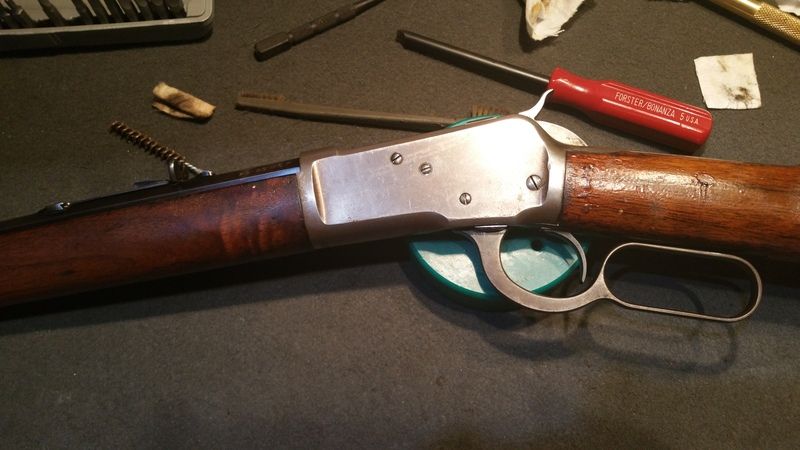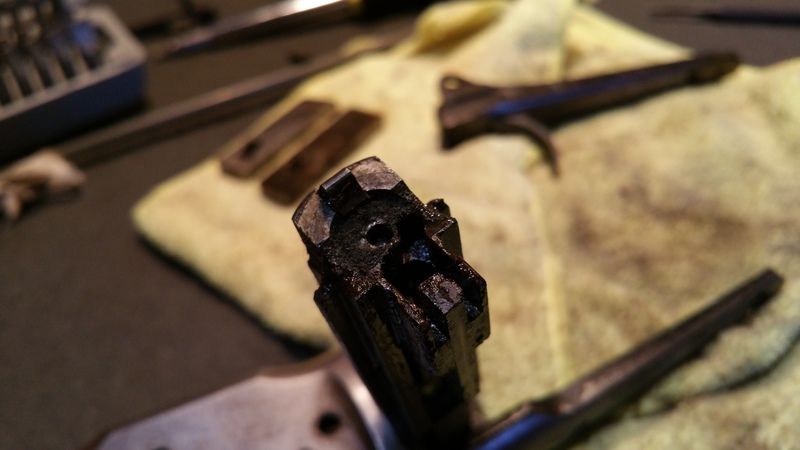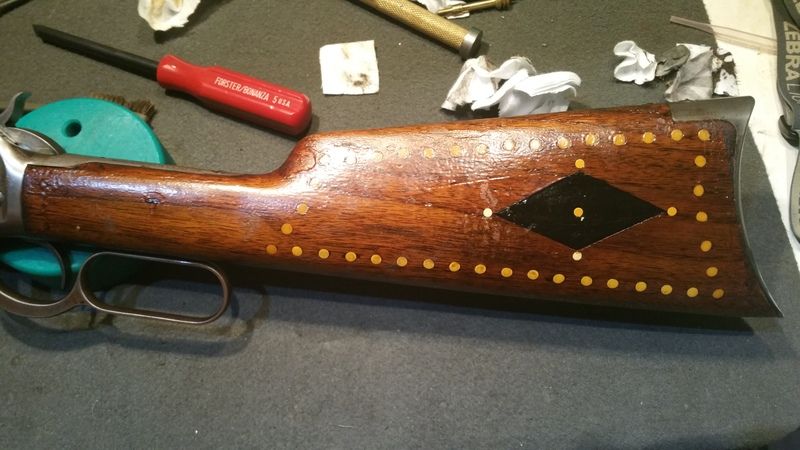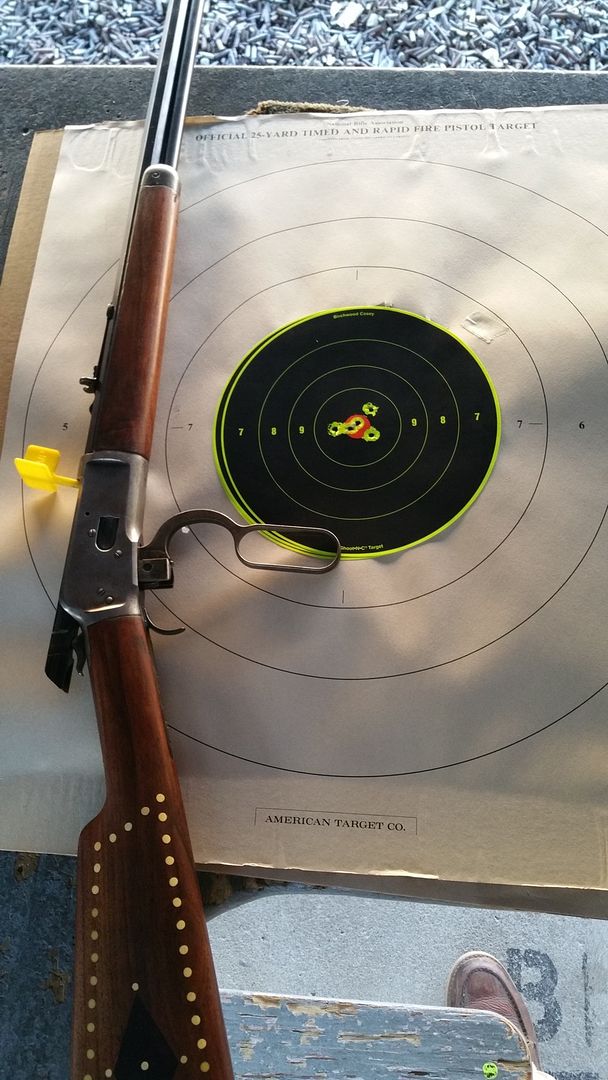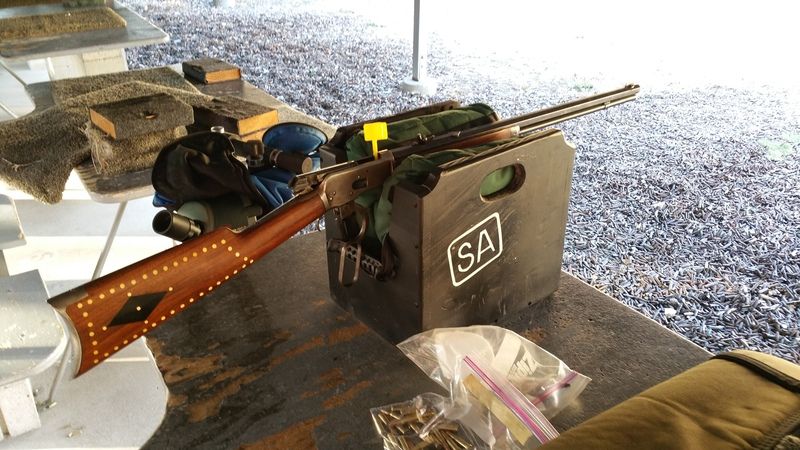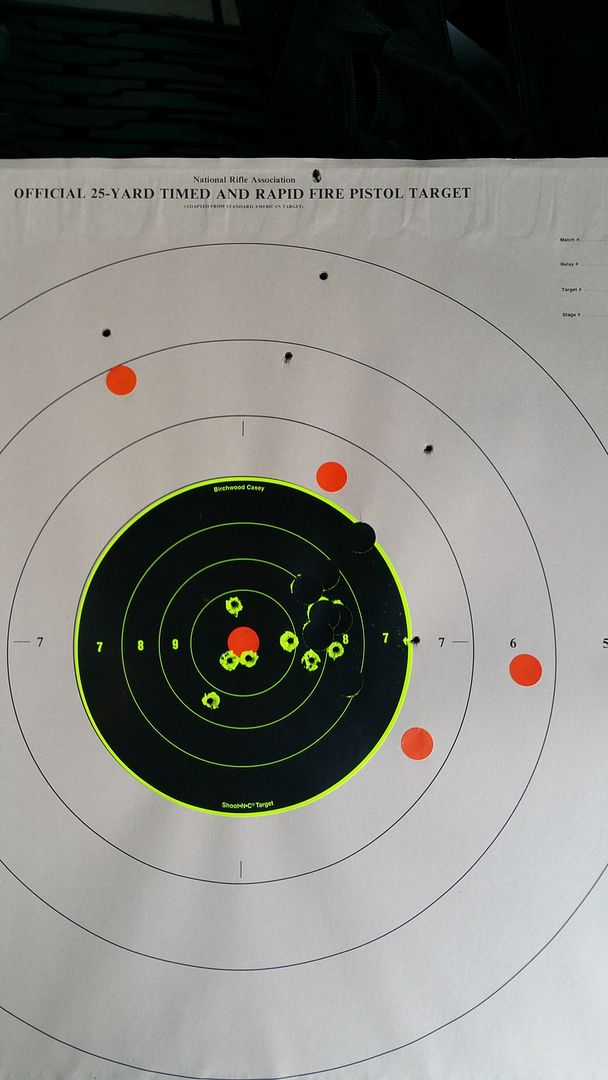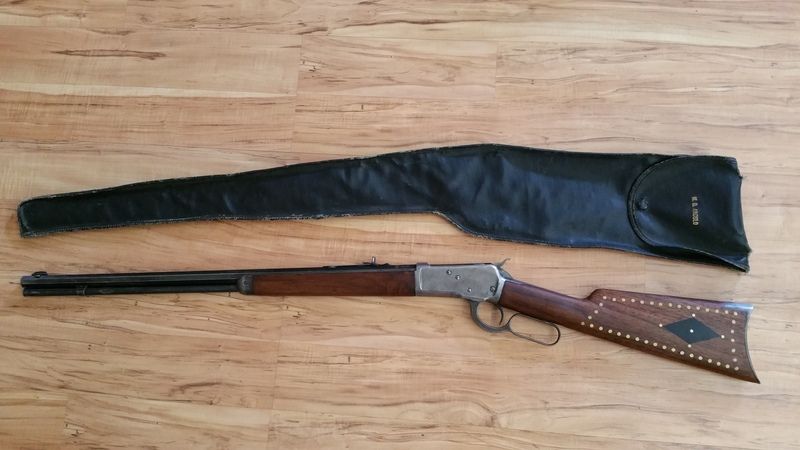Hello to my fellow WCA members, I have a question about an 1892 I picked up recently and wanted to ask for some opinions on whether this is a worthwhile project or am I better off leaving it the way it is?
The rifle in question is a Model 1892 made in 1910. I called Jessica at Cody and got the date confirmed, but since it is a 500K serial, there is no other data available on it other that the date. The rifle was offered to my on a local forum. The owner (in his 60’s) inherited it from his grandfather and his Son was not interested in it, so he was looking to sell it. He told me his grandfather lived in Mexico and was “run out of Mexico by Pancho Villa”. I did NOT pay extra for the story, so it is worth what I paid 😉
The rifle has some interesting inlays in the stock, that appear to be ebony and ivory. Due to these modifications, I am assuming there is not much collectors value left in this rifle, so the real value to me is as a shooter.
I pulled it completely apart and cleaned the internals and attempted to clean the bore, but all I can say is I can see light through it finally!!
Here are some pics of the rifle:
This is how I got it
You can imagine how nasty the bore is, based on this pic of the bolt:
Pic of the stock modifications:
So to continue this post… I have some other rifles in 25-20, so I loaded up some new starline brass with 8g of IMR4227 and some of the last 86gr Remington .257 jacketed soft points that I have. Off a rest at 50 yards, this is what she is capable of:
First 20 shots to get things settled down:
Final 5 shots for record:
Pic of the stock after removing the drippy crud and applying 2 coats of RLO:
OK, so with all that said, here is what happens when I try to shoot cast lead out of this rifle- the high shots that are all over the place are my cast loads!!
I am seriously considering having a lined installed, as my goal would be to shoot this rifle in the local Lever Action Silhouette Pistol cartridge matches. I called Redman today and spoke to him about it, but I am also seeing a lot of good things about TJ liners and I am wondering if it would be better to send it to someone who uses a cut rifling liner? Any help you guys can offer will be much appreciated!!
Thanks! Flyin Brian
She must still have some rifling in her to shoot jacketed loads well. Probably a real rough bore for cast though. You would have nothing to lose to try lapping the bore to smooth it up for cast bullets. Might even make it a little oversize but you can cast for that. Not much collector value as it is though so relining wouldn’t hurt anything. My 2 cents.
I have had problems with cast bullets in the 25-20 and it took a lot of different cast bullet types and different sized diameters before I found a very accurate bullet. The first thing to check is the bore just forward of the chamber. Stick a light in the muzzle and put your eye as close as possible to the open action. You can see a bit of the bore just forward of the chamber. If it is reasonably good, with decent rifling, you do not need a new liner. It has been a while since I shot 25-20 cast, but if I recall correctly, I required a gas check bullet sized to .257. Non-gas check bullets were all over the map.
My youngest has a ’73 .32-20 that has an ugly bore. It shoots jackets accurately, but throws and key-holes plain-based lead bullets. We found that using a poly filler brought the plain bullets to the bull’s eye. He shot those filler loads for about a decade. This summer we found a gas-checked bullet made by Daniel at The Bull Shop in Montana. The rifle’s accuracy is excellent with those bullets.
The Bull Shop makes several bullets for the .25-20. Before you do anything drastic to your rifle, I recommend you contact Daniel and try his gas-checked bullets.
1 Guest(s)


 Log In
Log In Members
Members Home
Home

 Add Reply
Add Reply Add Topic
Add Topic Offline
Offline


